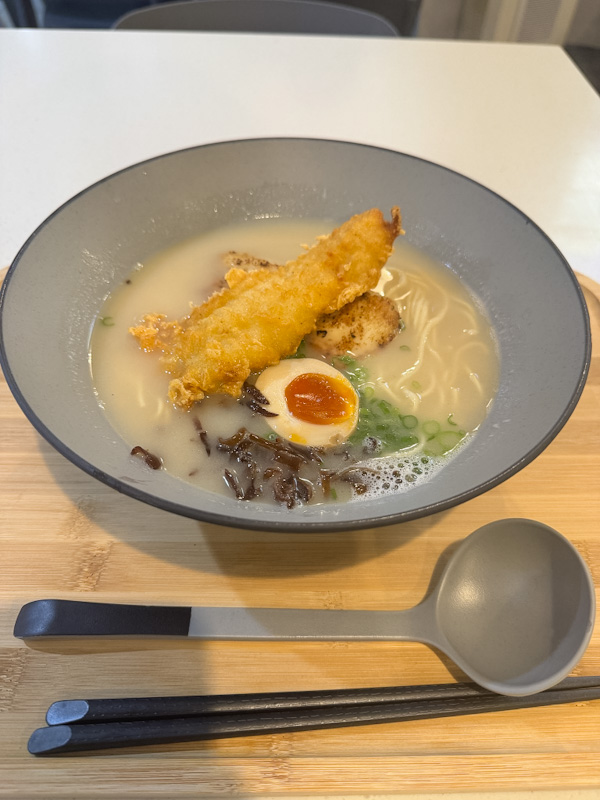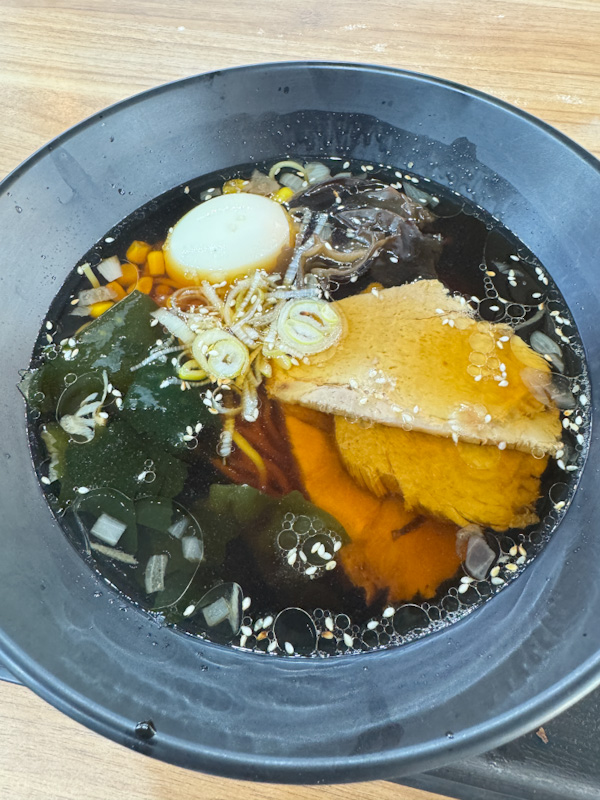WHAT WE ATE
- Ishiyaki Hot Stone Tsukemen, 85/100 (20 Nov 2025, Novena Square 2)
- Shoyu Ramen, 60/100 (23 Feb 2022, Novena Square 2)
If you’ve ever seen photos of “that volcano ramen place” in Singapore, chances are you’re looking at Tonkotsu Kazan Ramen. This Japanese ramen chain has planted itself quite firmly across the island, with outlets in malls like Funan, Square 2 at Novena, Northpoint City, Century Square and Bukit Panjang Plaza, so it’s become a familiar name for anyone hunting tonkotsu ramen in Singapore’s shopping belts. 
What makes Tonkotsu Kazan stand out is its theatrical “volcano ramen” concept: noodles and toppings arrive in a preheated stone bowl, broth is poured in at the table, and a red funnel lid traps the steam so it billows out like an eruption — a presentation inspired by the founder watching Singaporeans happily eat bubbling hot steamboat in our humidity.  Beyond the spectacle, the menu still covers the usual tonkotsu suspects (shoyu, shio, miso and friends), but I’ll save the actual tasting notes for the review proper.
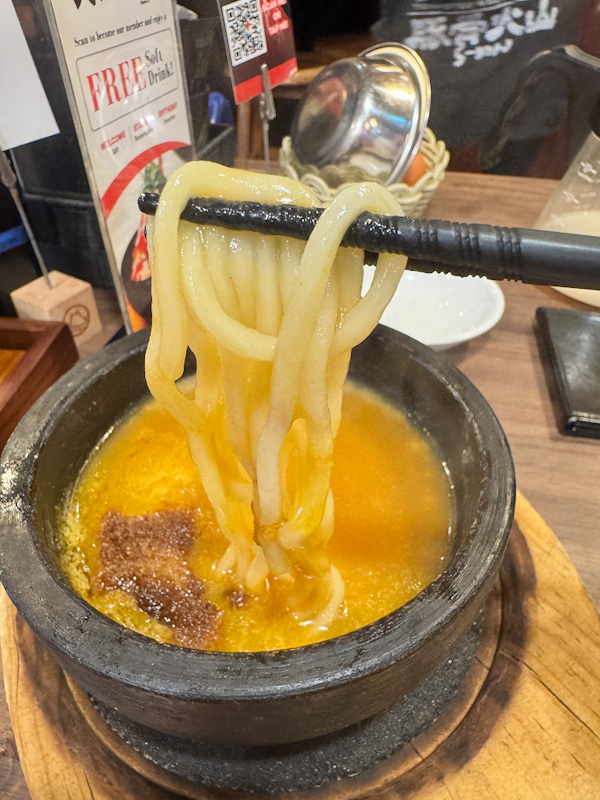
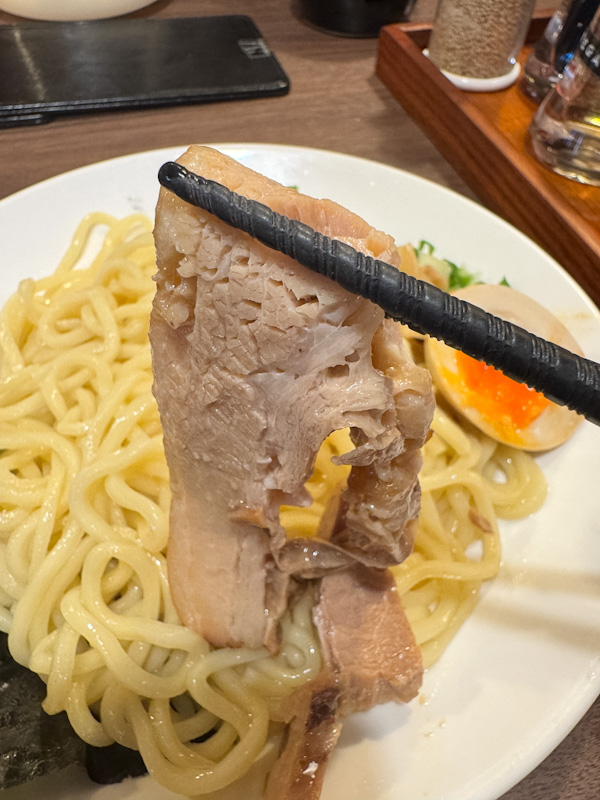
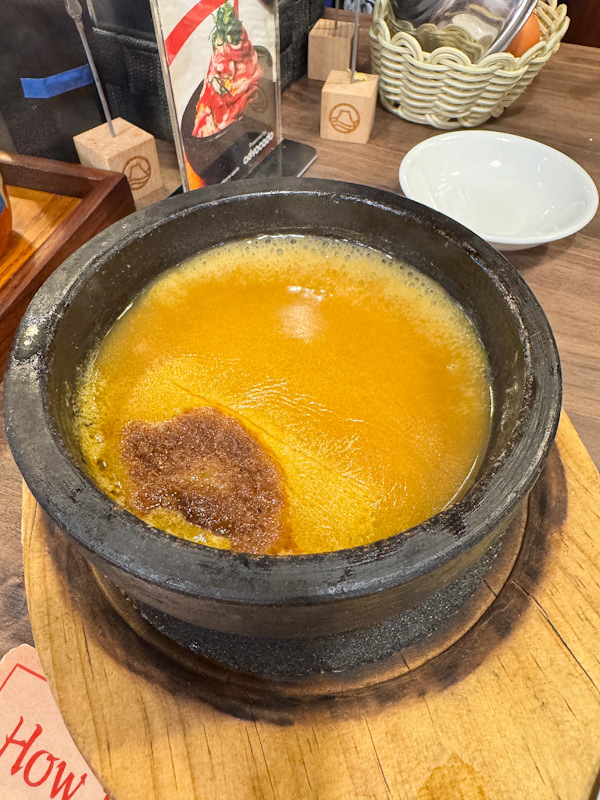

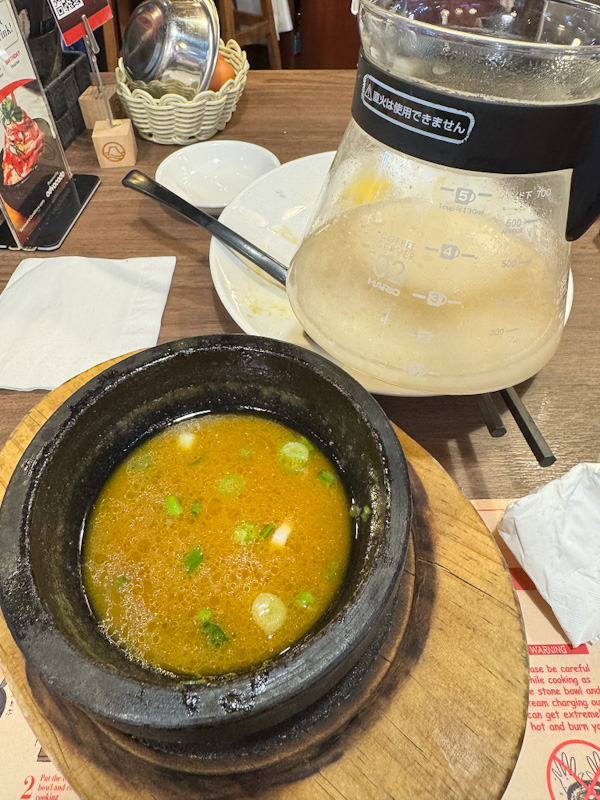
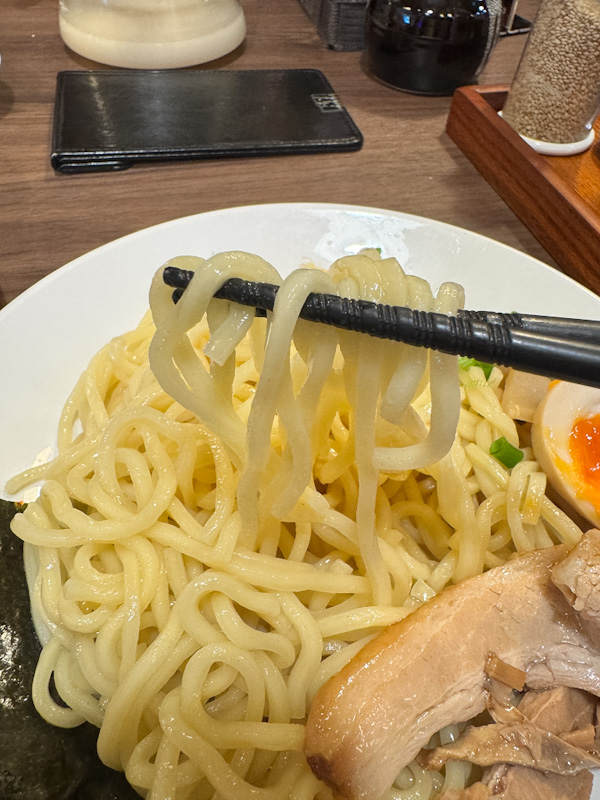
Ishiyaki Hot Stone Tsukemen: 85/100
Noodle: 30/35
The noodles arrive thick and gently rounded, the kind that immediately signal weight and intention. They hold a firm, almost muscular resistance, yet the chew settles into a mochi mochi rhythm that feels deliberate rather than dense. The mouthfeel lands in that sweet spot where elasticity meets softness. There is a clear wheat aroma, and right at the tail end a faint eggy note rises through the chew. Subtle, but it gives the noodles a more layered identity.
Soup: 30/35
Served in a blazing hot stone bowl, the sauce hits the table sizzling and sending up smoke. The head of the flavour is a sharp savoury jolt. Once it settles, the bonito builds the body with a rounded, oceanic warmth, followed by a zesty and slightly sourish streak that lifts the weight of the broth. The finish is a lingering sour tang that cuts through the richness in a very controlled way. The only point of critique is its slight oiliness, though the acidity keeps it from feeling too heavy.
Meat: 20/20
The pork belly is medium thick and generously braised. It breaks apart with the gentlest nudge, the fat collapsing into a melt that coats the tongue without greasiness. The taste leans salty with a soft sweet undertone, almost like the sweetness was built into the grain of the meat during cooking rather than added after. No complaints here.
Other Toppings: 5/10
- The lemon is a smart touch, sharpening the noodles and resetting the palate between bites.
- The marinated egg has that ideal custard-like texture, with a faint shoyu bitterness interwoven with its savoury sweetness.
- Bamboo shoots are tender, juicy and slightly fruity without the usual pungency.
- The negi is fresh but too restrained to anchor the bowl.
- Black fungus adds crunch but stays neutral in taste.
- Once the meal rounds off, pouring the soup stock in transforms the sauce into a clean, drinkable broth that refreshes the palate after a rather heavy set of flavours.
Summary
This bowl was an unexpected turnaround for a shop I previously dismissed as forgettable. My last visit saw an empty dining room and a fairly average meal. Today it was bustling, with a queue forming outside, and the food reflected that renewed energy. The chashu tasted markedly improved, and the tsukemen was far better than I would have anticipated from a place that does not specialise in it. A surprisingly strong showing.
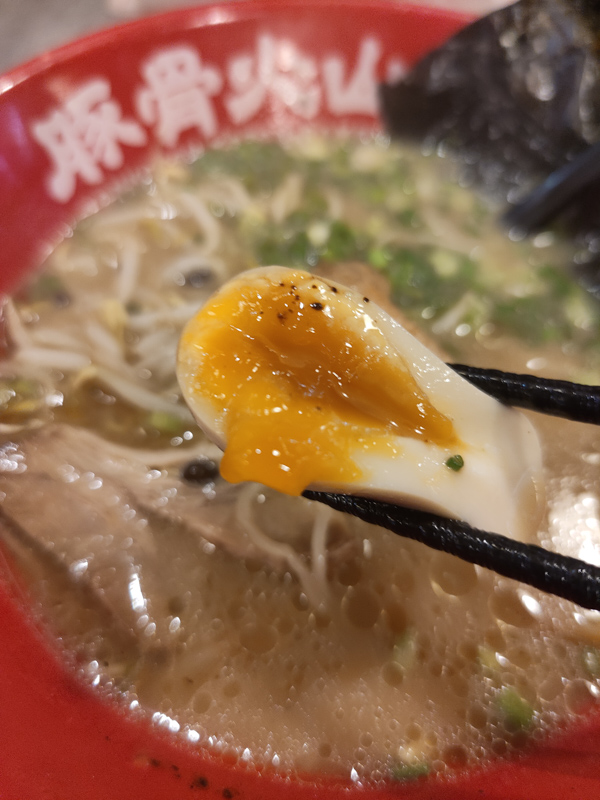
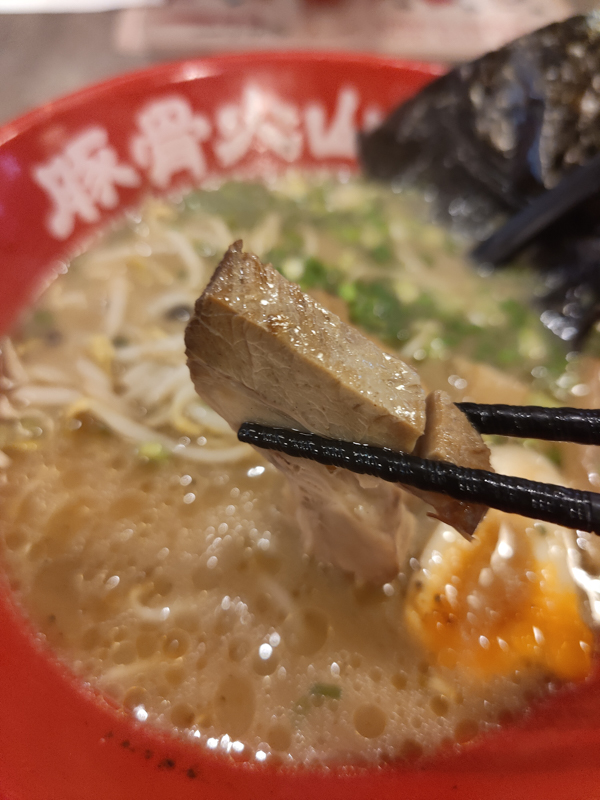

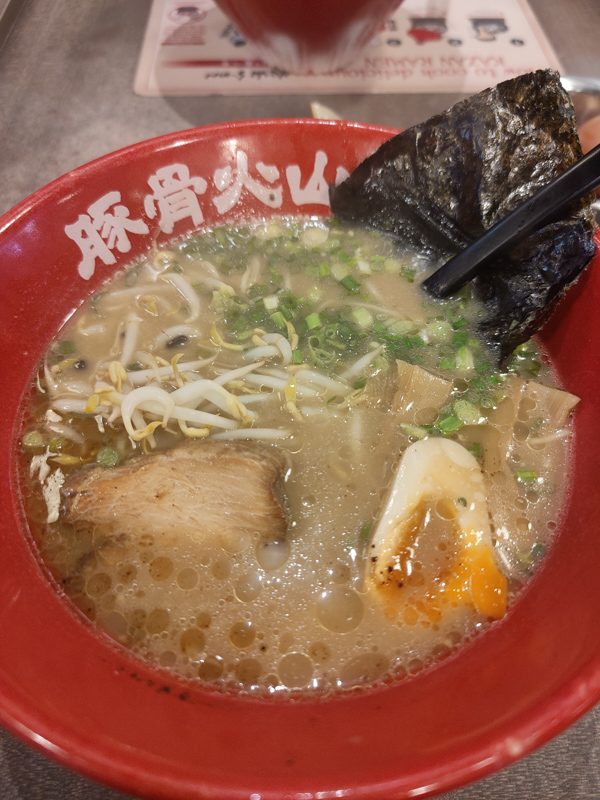
Shoyu Ramen: 60/100
Noodle: 20/35
Instead of the usual medium-thick, curly profiles commonly paired with shoyu, the noodles here lean towards a long, straight Hakata-style shape. They carry a clean bite but could use more tensile firmness to hold their ground against the broth. Still, they taste fresh, with a mild, almost fleeting fragrance that lifts the first few mouthfuls before tapering off.
Soup: 20/35
The broth looks promising at first glance, but once you start breaking it down, the layers feel a little underdeveloped. The head lacks that sharp, aromatic shoyu hit that should announce itself immediately. The body is gentle but never fully deepens, and as you move through the bowl, the flavour thins out instead of evolving. The final notes settle into something mild, bordering on bland. Pleasant enough, but not memorable.
Meat: 15/20
A generous slice of chashu anchors the bowl. The thickness is calibrated well, giving each bite a satisfying chew without veering into toughness. The flavour intensifies gradually, the seasoning sinking deeper into the fibres as the meat warms in the broth. It is easily one of the stronger components in this bowl, and arguably the part that carries the most intention.
Toppings: 5/10
The half egg looks slightly flattened but performs better than expected. The yolk is gooey with a controlled richness, and the marination has a balanced savoury-sweet profile that blends well with the broth. Beansprouts add freshness and lightly reset the palate between spoonfuls. The bamboo shoots, however, are inconsistent, with a few fibrous pieces that interrupt the texture.
As for the weekday lunch promo gyoza, it did not fare well. The execution needs work, and visually it was clear before the first bite that it would struggle to impress.
Summary
This bowl has a few bright spots, especially the chashu and the egg, but it lacks the complexity and aroma that usually anchor a good shoyu ramen. Although it is presented as Shoyu Ramen, the broth looks closer to a tonkotsu–paitan–shoyu mix, which explains the heavier profile and the choice of Hakata-style noodles rather than the classic shoyu pairing. It remains serviceable if you are already here, though the broth and supporting elements leave room for further refinement.
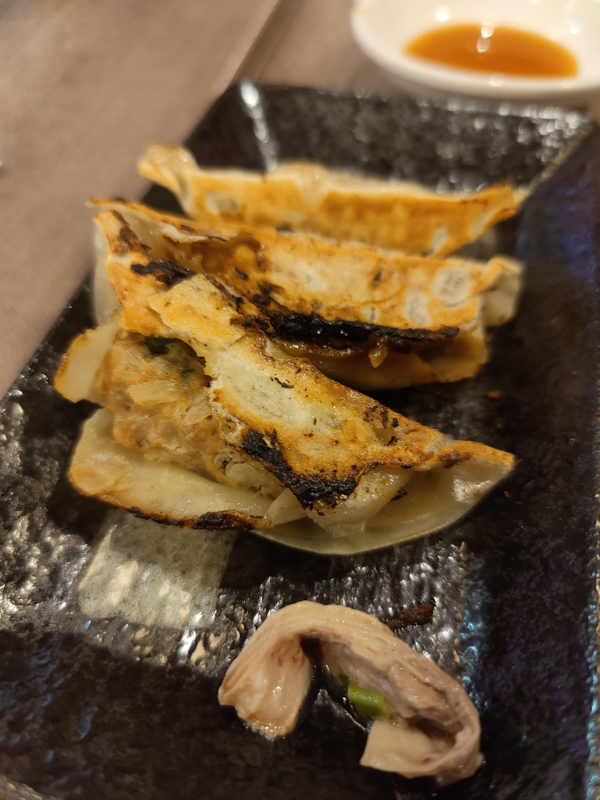
DISCLAIMER
One man’s meat is another man’s poison.
Find out more about our palettes and how we evaluate our ramen here. 😉

